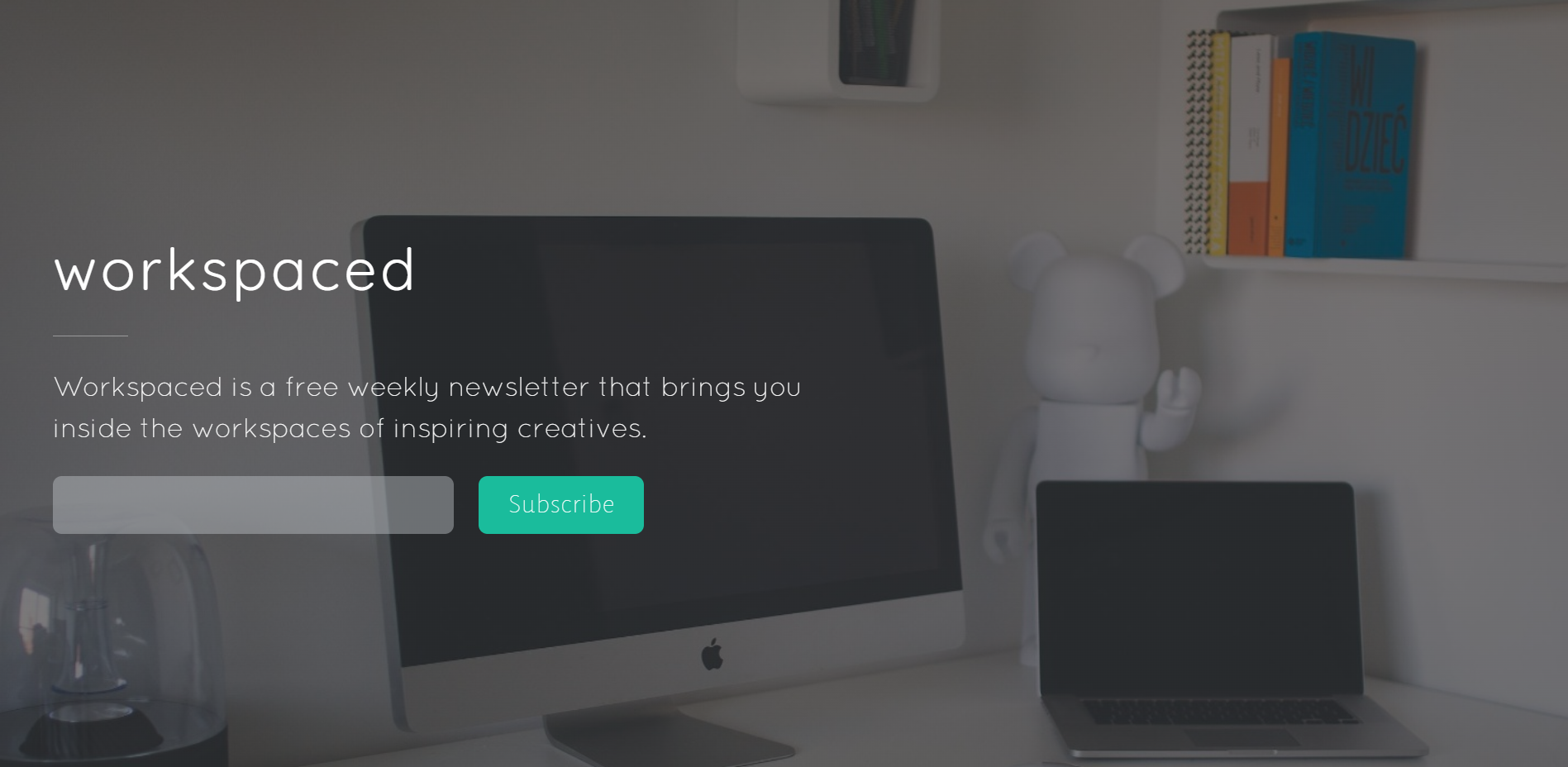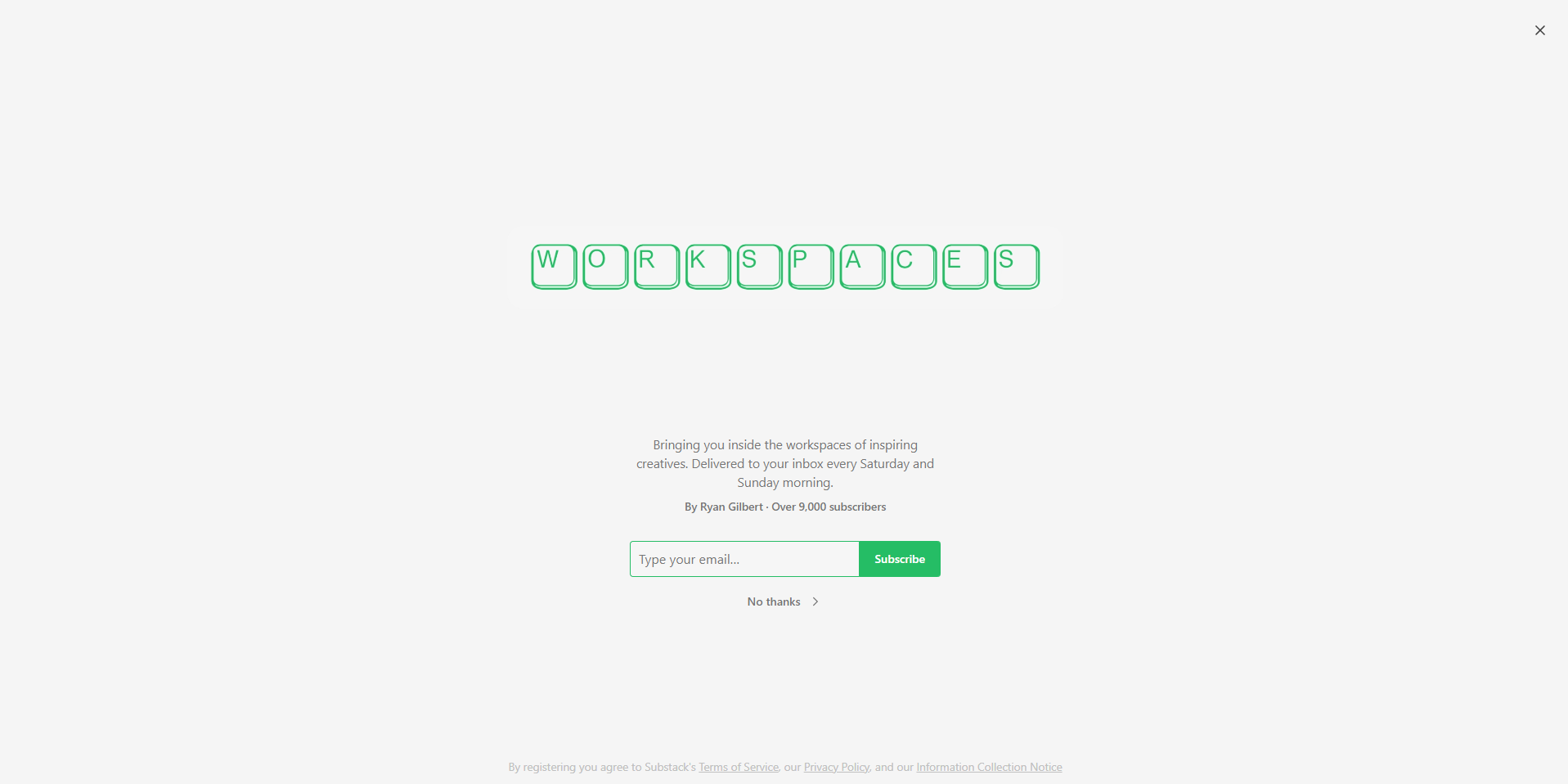This article was originally published as part of a media project I launched called Indiemaking that covered the indie hacker and internet business scene. The project has since been shut down, but I wanted to memorialize this piece here on my blog.
Six and a half years ago, Ryan Gilbert sent out a tweet that would foreshadow a life-changing journey.
Do you know anyone with an awesome workspace?
— Ryan Gilbert (@rjgilbert) April 26, 2016
Two weeks later, he released the first edition of his new side project, Workspaced, "a weekly newsletter that brings you inside the workspaces of inspiring creatives."
Ryan Hoover, the Founder of Product Hunt, was the first to be featured in the fledgling newsletter.
Ryan went on to publish 16 more editions of Workspaced, compiling stylish photos and short synopses of the workspace setups of designers, writers and entrepreneurs.

Then, at the end of November 2016, the newsletter posts abruptly stopped.
"I started Workspaced at a time when I had a nonexistent social following and extremely limited network," Ryan told me over Twitter DMs. "It made it tough to get started and stay motivated."
For the next two years, Ryan tabled his side project ambitions, but his passion for startups and indie making never faltered.
He continued to tweet about business and bootstrapping and share articles that he was ingesting from founders and makers like Justin Jackson, Jason Fried and Tim Ferris. He was also apparently sitting on a few killer domain names at the time.
Possibly looking to sell https://t.co/VguHziiSOA and https://t.co/ZZ72nGZY0i domains!
— Ryan Gilbert (@rjgilbert) August 28, 2018
Anyone interested?
Eventually, like all true indie makers and entrepreneurs, Ryan caught the side project bug once again and began building.
In January of 2019 he launched Frequently, "the easiest way to set up FAQ pages for your company."
For the next year, Ryan chipped away at Frequently and dutifully committed to the build-in-public ethos. He shared his metrics each month while adding new features, improving design and spreading the word.
Ryan sent the final build-in-public update on Frequently in February of 2020, roughly one year into the venture and at the precipice of a looming global pandemic.
January #openstartup numbers for @askfrequently
— Ryan Gilbert (@rjgilbert) February 10, 2020
👨💻 229 total users
🏃♀️ 816 monthly visitors
👀 3,385 monthly pageviews
💸 $40 MRR
Frequently had seen some initial traction and success, but the project just wasn't quite the right fit. "I was non-technical and couldn't implement feature requests quick enough to truly make a dent in a space that needed quick iteration," Ryan explained.
Ryan went silent on Twitter for the next month (something we should all take a page out of his book on), then came back online in March with a tweet announcing a new, yet familiar, venture.
Introducing Workspaces 🖥☕️ https://t.co/kaayXUbvj2
— Ryan Gilbert (@rjgilbert) March 2, 2020
"Revisiting Workspaces was perfect timing, unfortunately really," Ryan told me. "COVID had everyone working from home and it just seemed like the perfect time to take my learnings over the years and really go for it this time."
With a Facebook-esque minor name change, a fresh logo, the power of Substack, all of his prior indie making experience, and a pandemic that was about to lock millions of creatives into their homes for months on end, Ryan was poised to hit the ground running.

The rest, as they say, is history.
Since re-launching the newsletter in early 2020, Ryan hasn't missed a single week of publishing. He cites consistency as one of the key levers of growth and success for Workspaces.
Another key growth tactic has been the traction loop baked into the Workspaces model. Makers submit their setups to the newsletter, Ryan shares their features on Twitter, then the makers retweet Ryan's posts to showcase their snazzy workspace to their audience. Wash, rinse, repeat.
Ryan's consistent execution combined with some light iteration on the concept – he eventually incorporated more setup photos and a short Q&A section to each edition – resulted in 6,500 subscribers and $2,000 per month in revenue by June of 2022, when he shared his metrics and conducted an AMA on Indie Hackers.
The ripples of success from Workspaces have spilled over not only to Ryan and his featured guests, but also to sponsors of the newsletter.
Loops, a YC-backed "Email for SaaS" startup, saw an immediate ROI from their very first Workspaces ad slot. This led to a "random idea" proposed to Ryan from Chris Frantz of Loops, followed by some back and forth discussions and then ultimately, a deal.
Some exciting news!@workspacesxyz has been acquired by @sendwithloops 🎉
— Ryan Gilbert (@rjgilbert) August 8, 2022
I have joined the team as Head of Content to continue publishing the newsletter (and new website) as I have over the past 2.5 years
How did this happen and what's next?
👇
Ryan now continues to grow and spearhead Workspaces, which recently surpassed the 10,000 subscriber mark, as the content arm of Loops as he takes on additional marketing initiatives for the team.
The acquihire of Ryan and Workspaces by Loops is an intriguing play for a company still in its first year of infancy. This trend seems likely to continue with earlier stage players as more startups realize the power of an established and symbiotic media brand.

I've been a huge fan of Workspaces since I discovered the newsletter earlier this year and couldn't be happier for Ryan and his success with the project. He is a kind-spirited indie maker who shines a spotlight on other creatives, shares everything that he learns and gives back to the community.
I look forward to checking out all the awesome workspaces that Ryan and the Loops team have yet in store for us. I'll be over here at my subpar maker station dreaming about one day having a setup as cool as their guests.
You can subscribe to the Workspaces newsletter here for free.
